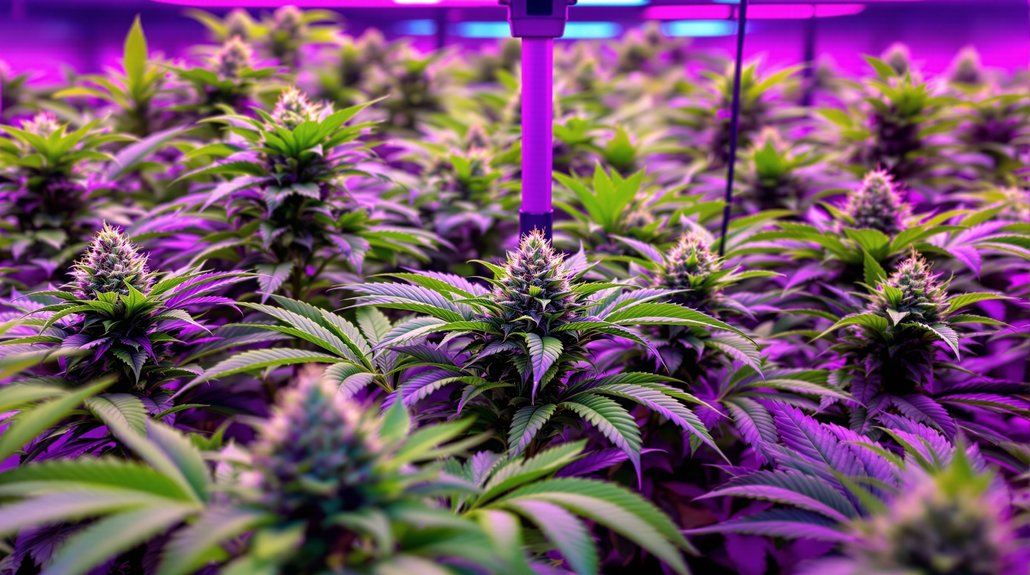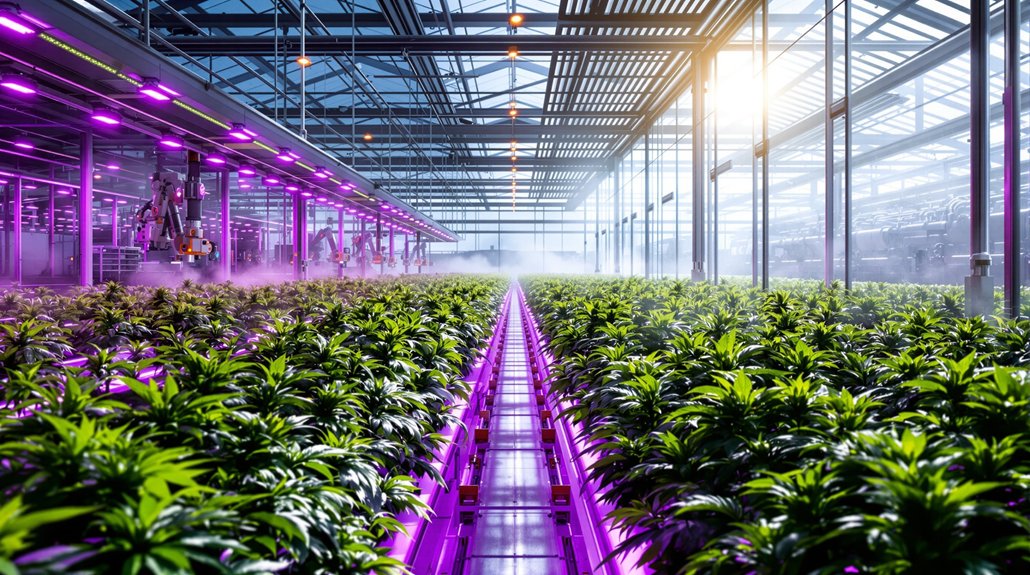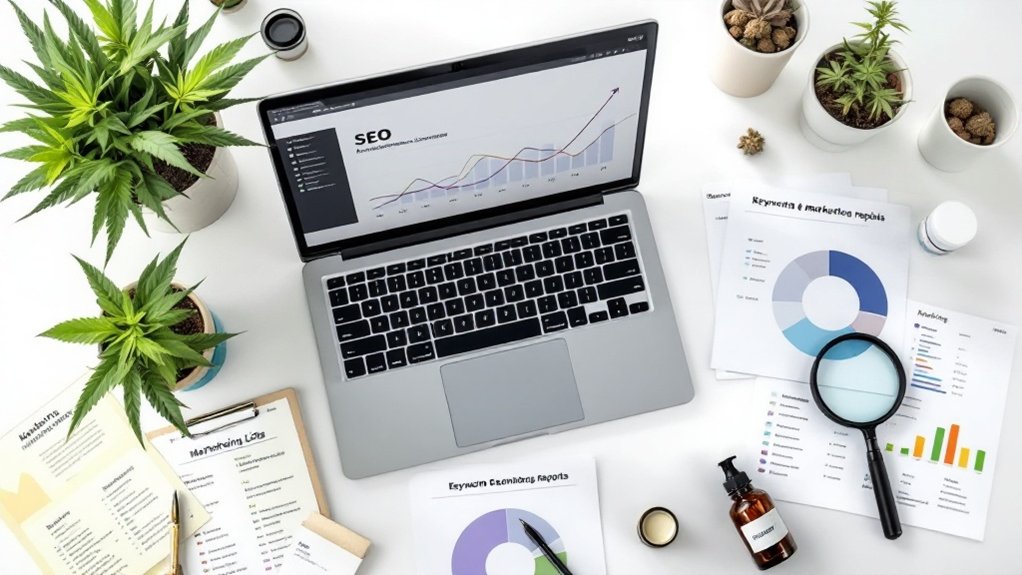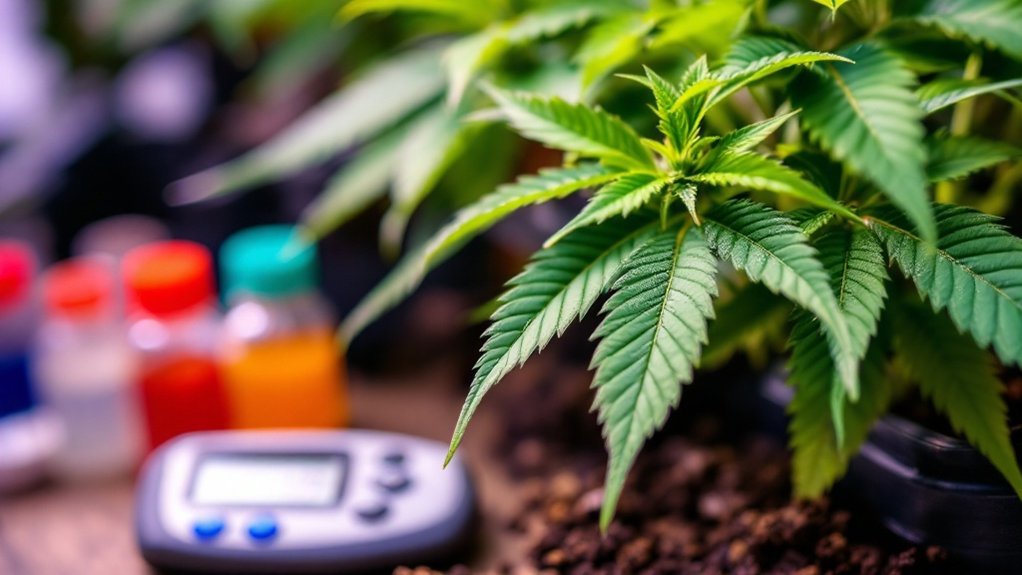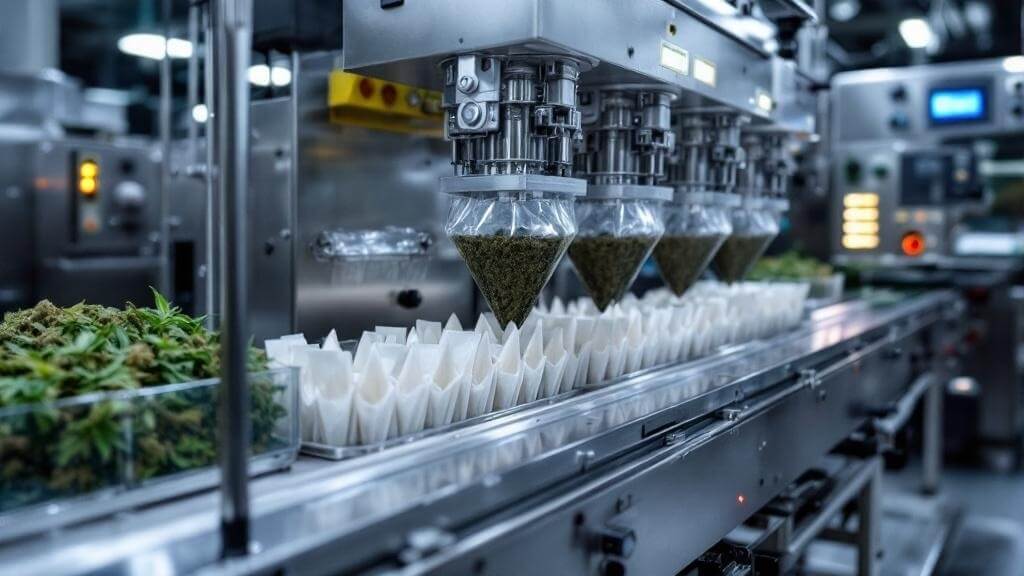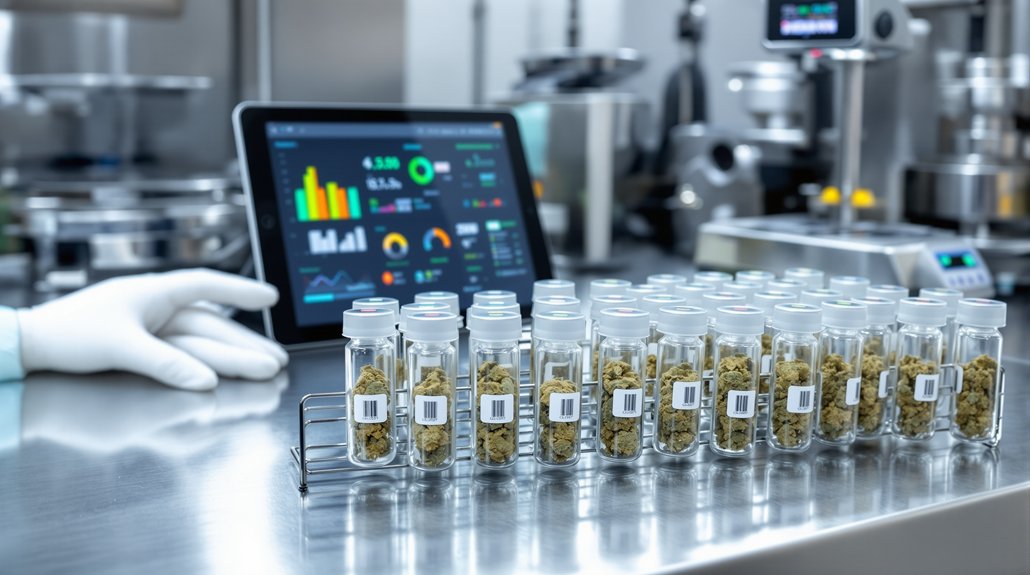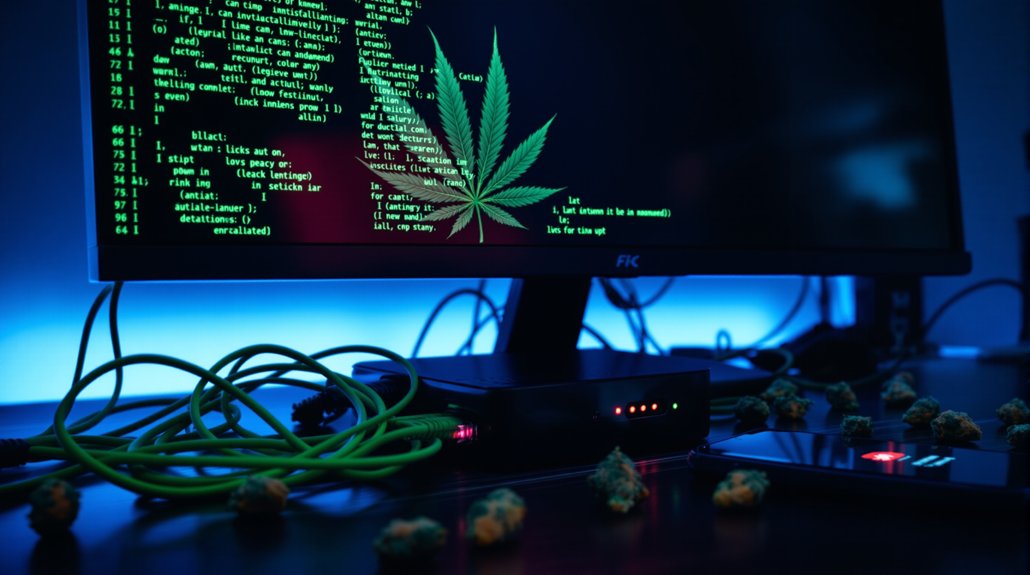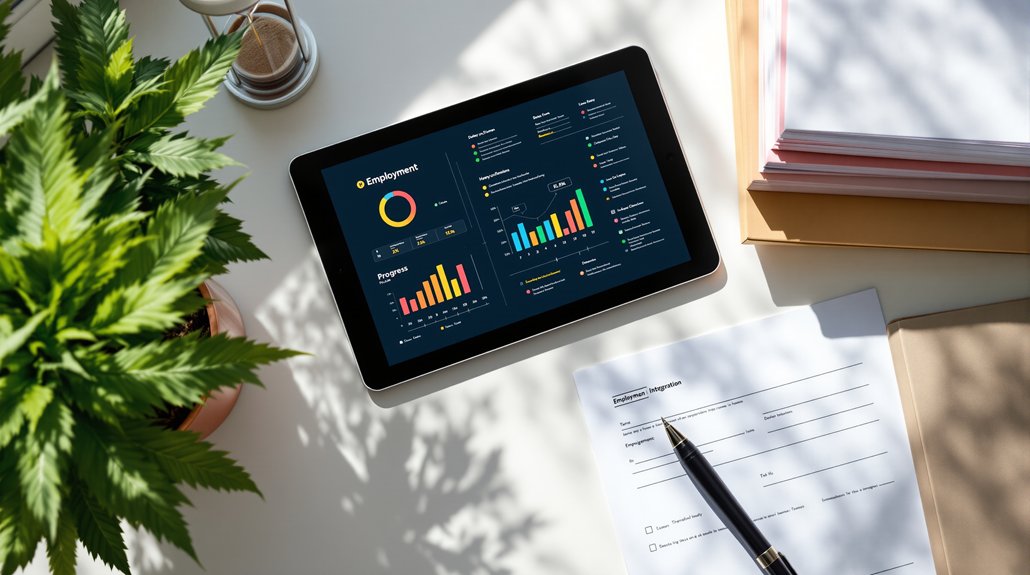AI and machine learning tools achieve 85-95% accuracy in yield forecasting, dramatically outperforming traditional methods while reducing economic uncertainty by 40%. These technologies streamline inventory management through IoT sensors and real-time tracking, while automating quality control processes using visual inspection algorithms that grade produce and identify defects. AI optimizes cultivation environments by adjusting lighting spectrums to reduce energy consumption by 15%, detecting diseases through hyperspectral imagery with 75.5% accuracy, and delivering precise nutrient recommendations based on all-encompassing sensor data analysis. Further exploration reveals additional transformative applications across agricultural operations.
AI and Machine Learning Applications in Yield Forecasting, Inventory Management, and Quality Control
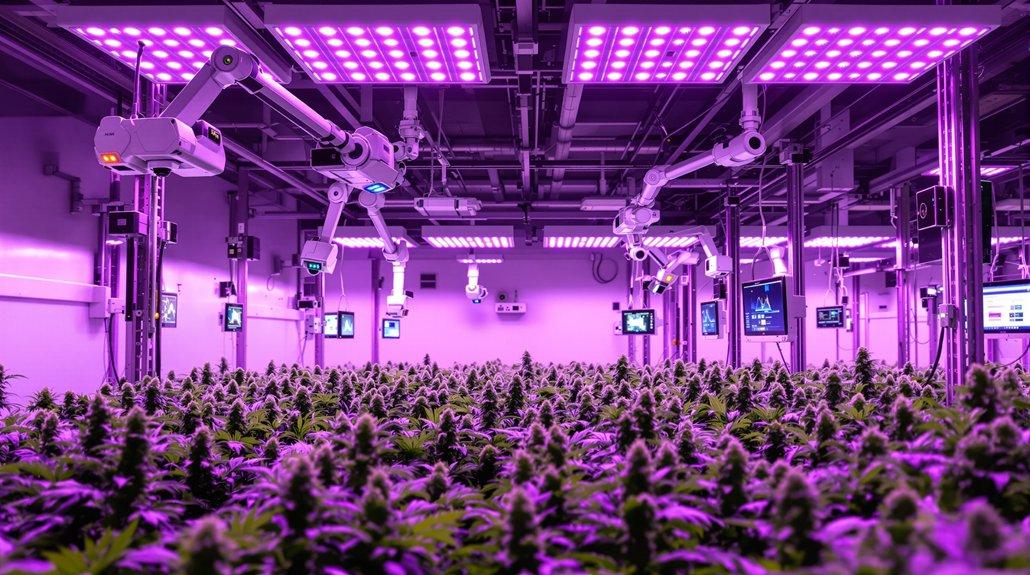
As agricultural operations face increasing pressure to maximize productivity while minimizing waste, artificial intelligence and machine learning technologies have emerged as transformative solutions for three critical areas: yield forecasting, inventory management, and quality control.
AI-powered yield prediction models demonstrate remarkable accuracy rates of 85-95%, vastly outperforming traditional methods that achieve only 60-70% accuracy. These systems utilize advanced algorithms including Random Forest, LightGBM, and LSTM networks to analyze satellite imagery, soil sensors, and weather data. By reducing economic uncertainty by up to 40%, these AI-driven forecasting systems enable farmers to make more informed financial decisions regarding resource allocation and crop insurance planning. Unlike traditional approaches that rely on historical averages, modern AI tools provide real-time adaptability to changing field conditions throughout the growing season.
In inventory management, AI predicts harvest volumes and timing, enabling precise supply chain planning through IoT sensors and real-time tracking systems. Cannabis enterprises in particular are leveraging cloud-based solutions for scalability and adaptation to rapidly evolving regulatory requirements. Quality control automation employs machine learning visual inspection to grade produce based on color, size, and texture, while identifying contaminants and defects throughout processing lines.
AI-Driven Solutions for Lighting Spectrum Optimization, Disease Detection, and Nutrient Management
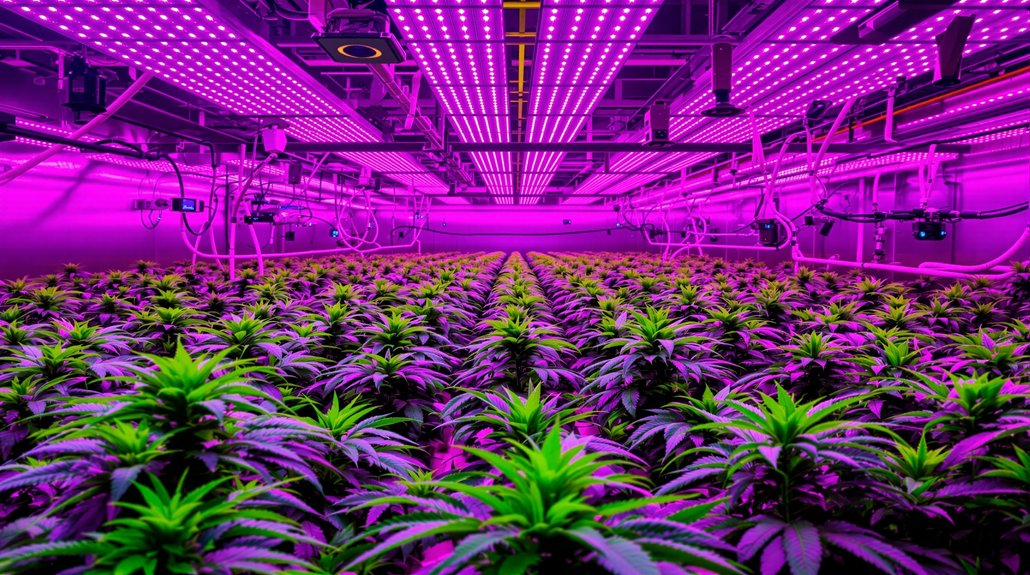
Beyond optimizing overall agricultural operations, AI technologies are now advancing into the precise control of growing environments themselves, targeting three fundamental aspects of plant cultivation: lighting spectrum optimization, disease detection, and nutrient management.
AI algorithms automatically adjust lighting wavelengths, intensity, and duration based on real-time plant requirements, enabling tunable LED systems to accelerate growth while reducing energy consumption by up to 15%. Convolutional neural networks achieve 75.5% accuracy in disease classification using hyperspectral imagery, detecting subtle symptoms invisible to human observation. Meanwhile, AI-powered nutrient management systems analyze soil, climate, and plant sensor data to deliver precise fertilizer recommendations.
These integrated solutions create responsive growing environments that adapt continuously to crop needs, maximizing yield quality while minimizing resource waste through predictive analytics and automated adjustments. Machine learning algorithms predict future energy needs based on past data, enabling synchronized operation of climate control systems for maximum efficiency. AI systems can analyze thousands of datapoints to make environmental adjustments that optimize growth conditions in real-time. Companies like Fluence Bioengineering utilize AI to optimize light spectrums for various crops, demonstrating how artificial intelligence can tailor specific wavelengths to match plant requirements across different growth stages.
FAQ
What Are the Typical Costs for Implementing AI Yield Forecasting Systems?
AI yield forecasting systems typically cost between $30,000 and $300,000 for initial implementation, depending on complexity and scale.
Entry-level systems range from $30,000 to $100,000, while mid-range solutions cost $100,000 to $200,000. High-end platforms exceed $200,000.
Per-hectare costs average $20 to $50 for basic systems and $30 to $70 for advanced approaches. Most systems achieve return on investment within two to three growing seasons.
How Long Does It Take to Train Machine Learning Models for Agriculture?
Training machine learning models for agricultural applications typically requires days to weeks, depending on dataset size and model complexity. Data collection and annotation often represents the largest time investment, consuming weeks to months.
Transfer learning and pretrained weights can drastically reduce training duration by enabling faster convergence. Models supporting autonomous farm management may need hundreds of millions of data points across multiple growing cycles, resulting in more resource-intensive training periods.
Can AI Systems Work Effectively on Small-Scale or Organic Farms?
AI systems demonstrate strong effectiveness on small-scale and organic farms through mobile applications achieving 90-100% accuracy in pest detection. Nigerian smallholders experienced 40% water efficiency improvements and doubled cultivated land size using AI tools.
Indian farmers reported 13% higher productivity and 27% greater returns with AI-driven irrigation and forecasting. However, barriers include limited rural internet connectivity, high initial costs for sensors, and insufficient technical training among farmers.
What Happens When AI Systems Make Incorrect Predictions or Recommendations?
When AI systems generate incorrect agricultural predictions, several negative consequences emerge. False yield estimates cause resource misallocation and labor scheduling problems, while inaccurate disease detection delays critical interventions, increasing crop losses. Faulty quality control recommendations can compromise food safety and damage brand reputation.
These errors expose farms to regulatory penalties, legal liability, and significant financial losses. Continuous model retraining, human oversight systems, and sensor redundancy help detect and correct AI mistakes before they cause operational damage.
Do Farmers Need Technical Expertise to Operate These AI Agriculture Tools?
Farmers typically need significant technical expertise to operate AI agriculture tools effectively. These systems require proficiency in data collection, software interfaces, sensor calibration, and predictive analytics.
While some developers create simplified interfaces, most tools still demand specialized knowledge for proper implementation. Small-scale farmers often face accessibility barriers due to high costs and complexity, leading larger operations to employ dedicated technology specialists while smaller farms rely on external consultants.
Looking for more information about commercial growing? Check out our Guide to Cannabis Cultivation: Technology & Innovation.
